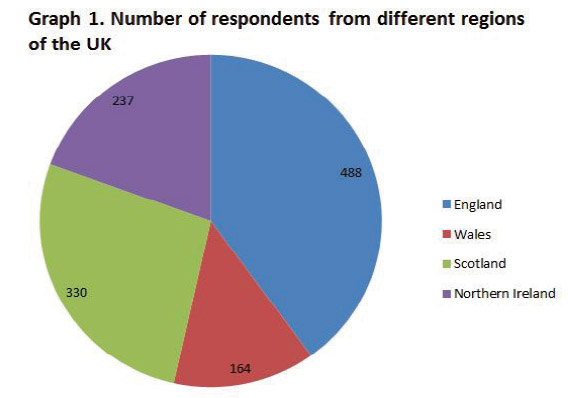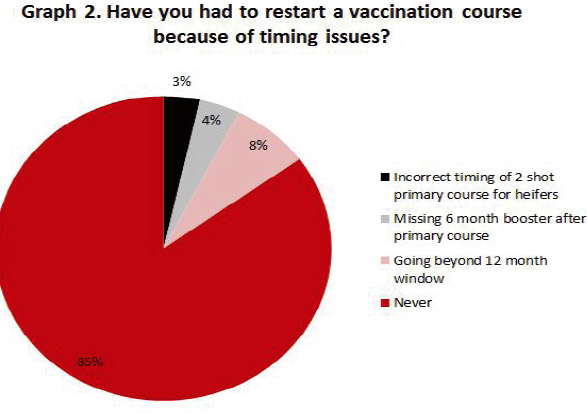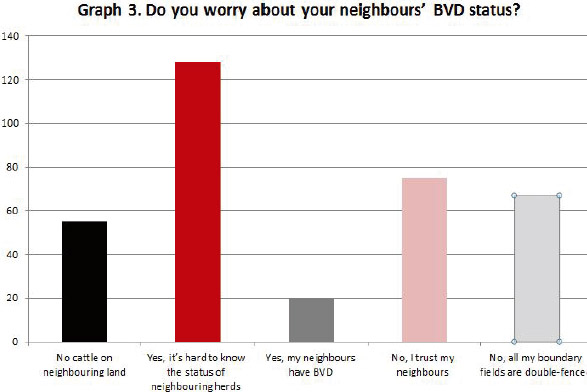
National BVD Survey took place in January and attracted more responses than ever before with over 1,200 responses from dairy and beef farmers across the UK.
With the majority of questions remaining the same as previous surveys, the intention was to be able to compare this year’s findings with those from the 2016 and 2017 surveys.
Answers tracked how behaviour, knowledge and attitudes have changed, especially since the launch of BVD eradication schemes in Northern
Ireland, England and Wales.
“Headline findings are that farmers have regrets about holding onto PIs (Persistently Infected animals ) which, at the end of the day, no-one should be doing,” says vet Matt Yarnall from Boehringer Ingelheim, who organised the survey. “But perhaps the most alarming finding was the worrying lack of awareness the intricacies of some BVD vaccination courses, especially around when they need to be restarted to achieve the protected needed.”
The survey was carried out by Boehringer Ingelheim in collaboration with the regional eradication programmes alongside the Farmers Union of Wales and Ulster
Farmers’ Union, with the support of British Dairying, Beef Farmer magazine and the The National Beef Association. There was a total of 1,219 responses, with the following regional breakdown:
• 164 responses from Welsh farmers.
• 330 responses from Scottish farmers.
• 237 responses from Northern Irish farmers.
• 488 responses from English farmers.

Forty four percent of respondents were beef farmers, and 56% were dairy farmers.
The financial benefit of being free of BVD was estimated as being over £90 per cow per year from savings in improved fertility and reduced disease in calves to name but two areas.
“This represents an excellent return on investment for those farmers opting to identify and remove PIs and bolster biosecurity by vaccinating their herd, who can then reap the performance and health benefits,” explains Matt Yarnall who has recently published research on the economic impact of BVD.
“Moreover, the identification of PIs, through tag and testing or otherwise, and investing in comprehensive vaccination as part of a herd’s biosecurity would cost less than £10 per cow per year.”
In England, when purchasing cattle, 41% of farmers said they would request documentation proving BVD health status of cattle, such as veterinary or CHeCS certification, or looking it up on the BVDFree database. When asked what did, or would, encourage farmers to join the BVDFree England programme, the most commonly selected responses were ‘increased herd performance’, followed by ‘recognition for taking care of my herd’ and ‘a premium at market’.
Similarly in Wales, 62% of farmers have BVD as part of their herd health plan stating that herd performance is better if it is free of BVD.
“In Scotland, 68% of farmers said they had never identified a PI but, given the levels of infection that are known to have been present in herds, it could be that
infection was circulating and affecting herds without producing PIs,” questions Mr Yarnall. “Look at this against the backdrop that two thirds of farmers said they’d seen a benefit from BVD control, and it seems likely that many more herds had issues with circulating disease than realised.”
The challenges of achieving good biosecurity for cattle farmers was highlighted by results from Scotland that showed the majority of farmers with neighbouring cattle are worried about their neighbours’ BVD status (see graph 3). When looking at vaccination, 15% of farmers that vaccinate have had to restart a vaccination course. This can be a costly exercise and tends to be because of incorrect timing of the two shot primary course, missing a six-monthly booster or going beyond the 12-month window of revaccination for those vaccines that require it.
“With last year’s 2017 survey data showing that 71% of users were inadequately protecting their animals with the BVD vaccine that requires a six monthly booster, it is perhaps cause for alarm that this year 85% of farmers haven’t restarted a vaccination course when the majority should have done,” comments Mr Yarnall (see graph 2).
Timing issues
To alleviate this issue, many vets now favour the use of the one-shot, annual BVD vaccine Bovela. Not only proven to provide 12 months’ foetal
protection, the vaccine has a simple annual booster regime, meaning there isn’t the same worry of missing a booster.
In Northern Ireland, farmers were asked whether they had knowingly retained a PI and, if so, what was the outcome. Interestingly, of the small number of farmers that had retained them, more calves died or had to be treated or put down than were successfully reared to slaughter. “This point is further illustrated
as, when asked if they would ever retain a PI animal again, 96% said they wouldn’t,” he adds.“The data has only just been reviewed and is being further analysed. It will now be shared with the national eradication bodies and farming unions, to help further understand how we can drive eradication of BVD in the UK, and further support the competitiveness of the cattle industry as we head towards uncertain times,” Matt Yarnall concludes.
